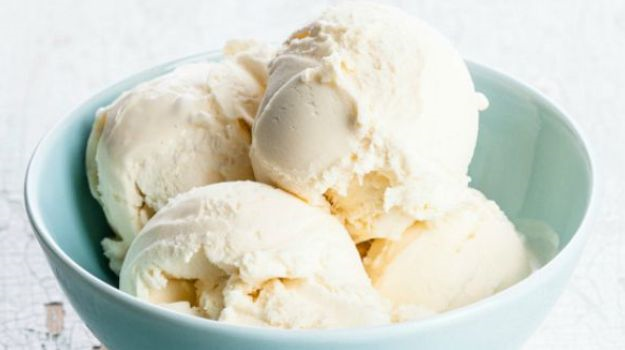I hate being misled. As a consumer, I like to know whether I am getting my money’s worth. And it’s no different when it comes to food. So how do you think I felt when I got a carton of ice cream and in a small, inconspicuous corner, I see the label – frozen dessert? Today, in India, frozen dessert has taken over as much as 40% of the ice cream segment. Before going into great detail, the big diff erence between ice cream and frozen dessert is this. Frozen desserts are made with vegetable oil. Also, this is usually the vegetable oil that we want to avoid in our diet, like coconut oil or palm oil. Ice-cream on the other hand, is mainly made from milk and dairy fat.
Here is a label comparison between ice cream and frozen dessert:
Ice Cream Claim: Labels it as Ice Cream on the top of the carton.
Ingredients: Water, milk, solids, sugar, permitted stabilizing and emulsifying agents (412, 410, 407, 471, 466). Contains added vanilla flavors (artificial flavoring substances).
Frozen Dessert Claim: The larger font says – Creamy Delights: Strawberry. In a corner on the side of the box, it says - Frozen Dessert.
Ingredients: Water, sugar, milk solids, edible vegetable oil, liquid glucose, vegetable protein, emulsifi er - 471, stabilizers - 410, 412, 407, acidity regulator - 330. Contains permitted synthetic food colors and added flavors. Nature identical and artificial milkand strawberry flavoring substances.
Analysis
For starters, the labeling is unclear. When you see the picture on the carton, you would think it is any ordinary ice cream. Only when you turn it around to look for a title, you see a much smaller font, almost apologetic to be there, and it says – Frozen Dessert. According to the Food Safety and Standards Authority of India (FSAAI), the defi nition of an ice cream, kulfi or softy ice cream means that the product is obtained by freezing a pasteurized mix, prepared from milk and/or other products derived from milk –
with or without the addition of nutritive sweetening agents, fruit and fruit products, eggs, etc. Frozen dessert means the product obtained by freezing a pasteurized mix prepared with milk fat and/or edible vegetable oils and fat having a melting point of not more than 37.0 degree C in combination and milk protein alone or in combination/or
vegetable protein products singly or in combination with the addition of nutritive sweetening agents. So in theory, both brands are correct and are not trying to say they are something they are not. Fair enough, but one could argue that it’s time FSSAI ensured that desserts do not camouflage themselves as ice cream, and the consumer is not left confused. A further comparison of the labels reveals that the number of calories is almost the same in both cases. But that’s never the whole story. The frozen dessert label says saturated fat of 5.8 and traces of trans fats. So both the harmful dietary fats are found in frozen desserts. Saturated fats as well as trans fats are what we want to
avoid in our diet. They add to weight, can cause heart problems and raise our cholesterol levels. According to the Harvard Medical School Heath Guide, trans fats are worse than saturated fats, and there is no safe level of trans fats. So nutritionally the frozen dessert falters. Lastly, there is the price factor. The consumer has no benefit as this frozen dessert is not cheaper than ice cream. This is despite the fact that dairy fat costs rupees 300 per kg while vegetable fat is rupees 50-60 a kilo. This issue has become a controversy amongst the players involved. The government has come up with a gazette notification amending the Prevention of Food Adulteration Act to allow the labeling of frozen desserts as ‘vegetable fat based ice cream’ or ‘non-dairy ice cream’. This has sparked off a fresh set of claims and counterclaims. Whichever way this row ends up, it’s time we looked carefully at our labels.
(Source: food.ndtv.com, updated: May 17, 2016)
Disclaimer: The information provided within this publication / eBook/ content is for general informational purposes only. While we try to keep the information up-to-date and correct, there are no representations or warranties, express or implied, about the completeness, accuracy, reliability, suitability or availability with respect to the information, products, services, or related graphics contained in this publication / eBook/ content for any purpose. Any use of this information is at your own risk.
 Youth
Youth
 Women
Women
 Research for Ishrae
Research for Ishrae







